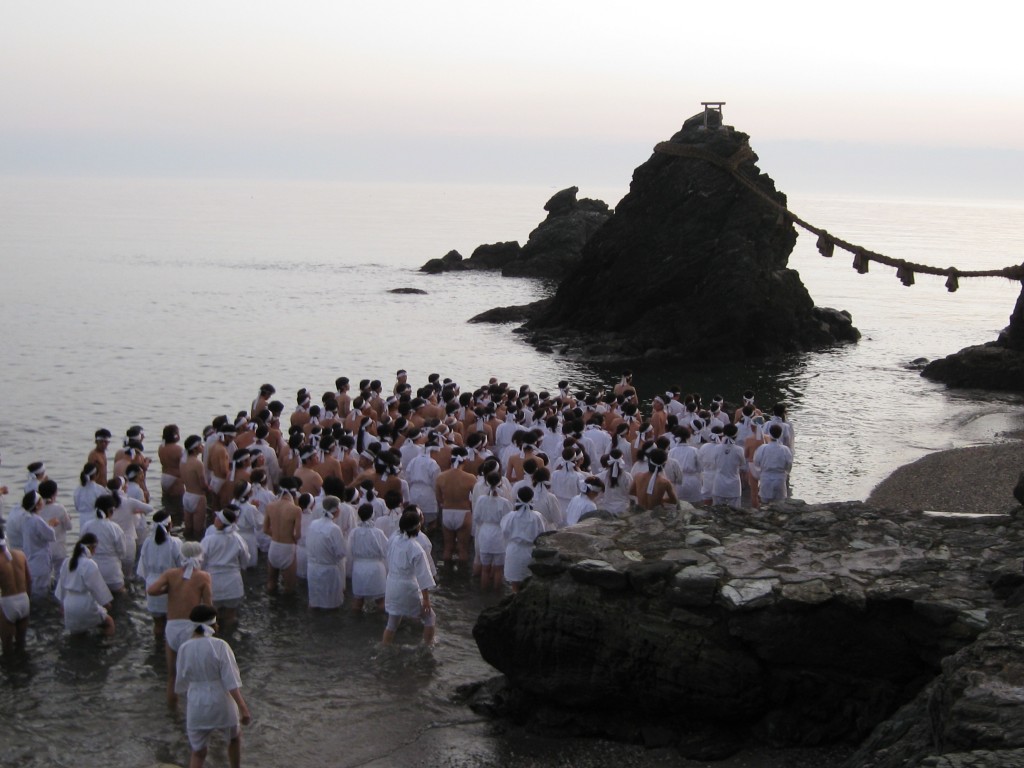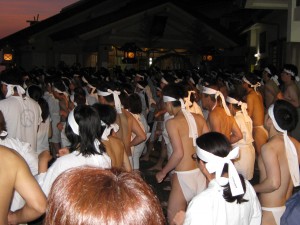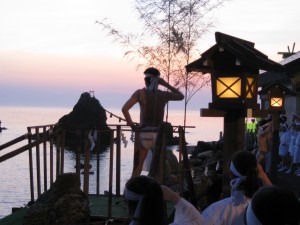The Japanese Dutch Shinzen Foundation published the following account of three spiritual exercises: misogi, furitama and chinkon from An Actor Adrift by Yoshi Oida (London, 1992 ISBN 0 413 67080 5)
Copyright © 1992 Yoshi Oida & Lorna Marshall
Chapter 8: A Global “Angya”
In Shintoism, the basic belief is that human beings are the same as ‘Kami’. You are, by nature, part of the vast energy of the universe. When you are born, you are pure and totally unified with ‘Kami’. But because life is difficult, your original purity becomes contaminated by negative energy. Your soul becomes covered in a sort of spiritual ‘dust’. When you are sick, or have bad luck, or even kill someone, it is not because you are fundamentally evil, hut because this ‘dust’ has polluted you. For this reason, the idea of purification is central to the spiritual exercises of Shinto.

The first spiritual exercise is Misogi (‘Cleansing’). In this you cleanse your surroundings and your body. Normally the body cleansing involves going to the sea, a river, or a waterfall. You shouldn’t go to a lake since the water is still. You need moving water. If you can’t go to nature, you can do Misogi in a cold shower.

The second exercise is called Furutama (literally ‘Shaking the Soul’). This involves strong physical movement. In some ways, I don’t think that this is a religious exercise. As I traveled about with Peter Brook, I discovered that each country bas certain kinds of movement that they used for spiritual purposes. Africans move from the tailbone, and use undulations of the spine. In the Middle Eastern Dervish tradition, there are whirling patterns and also certain repeated movements of the head and the shoulder, which are accompanied by a ‘hai, hai’ sound. In Japan, we have similar exercises. When you do these kinds of movement, they generate a sense of heightened spirituality, and they often appear within the context of specific religions. But their original function may lie outside organized religious traditions.
A human being consists of a spirit (soul/inner energy), as well as a physical body. Since we can see our body, we worry about it and try to take care of it. We give it food, Vitamin C, protein, and not too much sugar. We are aware of its health. However, since we cannot see our spirit, we forget about it. It doesn’t get fed. But the spirit needs nourishment, just as much as the body. Otherwise it gets lethargic and weak, and we are no longer fully ‘awake’ human beings. The movements I have mentioned above are exercises to feed and revitalize the spirit. They are not directly linked to any idea of ‘god’. In ancient times, people needed to be fully alert on all levels. Otherwise, they might die. So these exercises prepared them for hunting, or to respond to their environment (e.g. movements which utilize the spine may have the effect of stimulating nervous reactions, since the spine is central to the operation of the nervous system. So the ‘dances’ of African hunters may fulfill a practical purpose in sharpening responses.) In early times, these movement patterns probably existed independently of religion, but because they contained a spiritual element, religions incorporated them in their practice. Over the centuries, as technology developed, people stopped using these spiritual training exercises in their daily lives. Nowadays, you tend to find them within the context of a religion, since that is where they have been preserved. But they are probably much older. In any event, the ‘Furutama’ exercises of Shinto are of this type. They are strong physical movements, incorporating the use of specific sounds that are designed to stimulate the spirit.

The third exercise is called ‘Chinkon’ (‘Pacifying and Deepening the soul’), which is a quiet journey into the interior. This involves meditation, and focusing on specific mental images. These three elements, purification, spiritual movements, and meditation, are the bases of Shinto training.

Leave a Reply